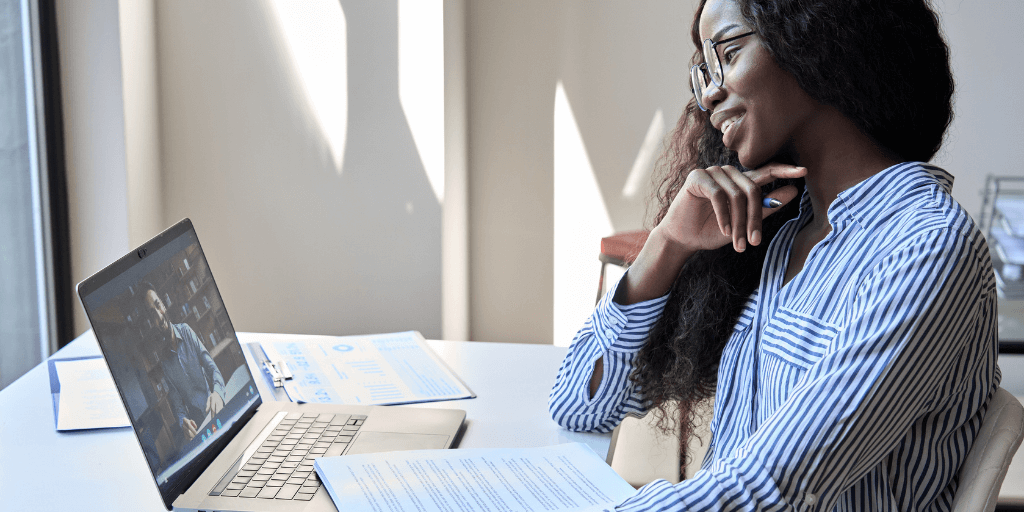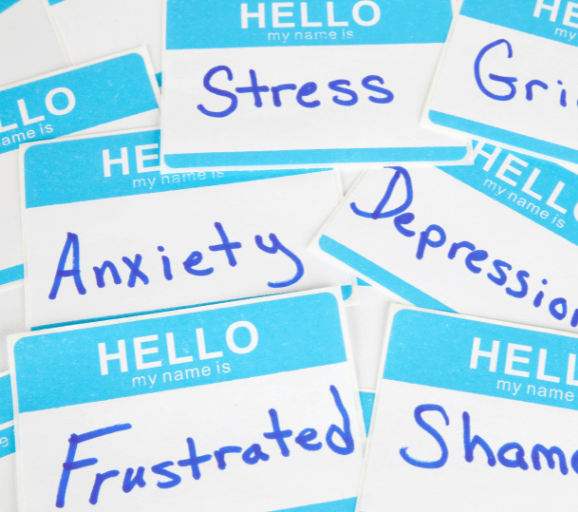
Having tough conversations virtually
‘Having tough conversations virtually ‘ blog article was written by Margaret Cartmell, Team Leader, OurSPACE NSW program at Australian Childhood Foundation.
“How do you give feedback safely in virtual space?” Overhearing this comment from a colleague got me thinking.
Context:
From a team leader’s perspective – how do you give feedback about learning and developing while meeting the complex requirements of admin processes, written documents and reports, when so much contact between team leaders and the therapeutic specialists in their teams is virtual?
During lockdowns, we gained confidence and creativity in the virtual space. We were forced to master technology that some of us had managed to previously avoid. We had to speak in meetings where often the image and sound were unstable. We had to build relationships and working partnerships with other services within this context, often in complex situations. We had to have tricky conversations which would be more suited to an in-person discussion. There was a lot in the digital transition we would have preferred to do face-to-face.
We know the difference a human presence can bring. Signals of safety, warmth, invitations for connection, facial expressions, voice tones, body movements – these just don’t translate as well over the internet.
A simple system-to-system connection relies so much on being present in the same space together.
Given we know this and, to some extent, were prepared to feel the difference, it still had a biological impact that felt unexpected. The system-to-system co-regulation isn’t there in the same way. Signals of safety and the satisfaction of connection are not there in the same way. There is the mysterious unseen operational space of presence that is missing. I know from my experience that giving written feedback on work and sending it back was often not helpful. Someone sitting on the receiving end of this communication is left to “hear” it through the lens of their current silent safety status – what their Autonomic Nervous System (ANS) is telling them.
And of course, I had my own experiences of this in emails and feedback.
Tricky as the space is, it’s an awesome opportunity to reflect on the misalignment of signals. In reflection, you could ask yourself whether you correctly read pieces you come across throughout the day as safety or threat. – You can identify the ruptured moments of the ANS and identify opportunities for repair.
The impacts this can have when someone has grown up with threat and whose ANS has been attuned to signs of danger:
- The combined, unrepaired ruptures for children (and adults in the Child Protection (CP) and Out of Home Care (OOHC) systems) have their ANS constantly telling them they are in danger. This happens when they are not and without a context to understand the feelings of a threat outside of the present situation.
- This can snowball when having responded in a felt state of threat, they are perceived as threatening and responded to in kind.
 We often see this with children who are punished for trying to feel safe in a way that is felt as threatening by the people around them.
We often see this with children who are punished for trying to feel safe in a way that is felt as threatening by the people around them.
The same can be seen in adults who, for instance, may feel so threatened by CP and OOHC systems they are constantly acting to defend themselves in ways that feel necessary to them, and concerning to others who then move into threat response.
In both instances, two parties are weaving together in an unseen but felt space of risk. Which we know is the antithesis of what we need in repairing trauma.
It comes back to the same question, though in different contexts, of how we support ANS systems to feel as safe as they possibly can in given circumstances, to work together well enough to support children and young people. Helping to resource children and the adults around them to feel safe, connected, and supported.
We can use our own bodies and systems as labs in understanding the subtleties in the ANS, where we are, the messages we are receiving and giving, where others are, and the messages they are offering and may need to receive to be able to feel safe and operate in their best possible space.
This doesn’t solve the issue of the initial question.
Still, the online space gives many of us a shared space to reflect on our own experiences of biological mis-attunement, rupture, what brings repair, and what helps to keep systems in attunement.
And finding what supports building these connected systems, is the most helpful way forward for our clients.
Join our Team
No matter where you’re at in your career, we want to help you excel. If you have a commitment to hard work and would love the opportunity to support children and families around Australia, we want to hear from you. There are so many ways you can be a part of the Australian Childhood Foundation.
